Best AI tools for B2B marketing
A few years ago, I decided to specialize in B2B marketing. After serving clients in many industries, B2B marketing stood out to me as the most exciting. I love the challenge of B2B: the longer sales cycle, the complex buyer journeys, the need to market to many stakeholders, the targeting, and the strategic thinking that comes with it.
The best artificial intelligence (AI) tools are transforming how I work on my business and how I serve my clients. And no, I’m not just talking about generative AI and writing. AI in B2B marketing is so much more than that.
I use AI so that I can focus on the things I enjoy the most. As a consultant, I’m not interested in doing everything manually. I’m more interested in bringing value where it makes the most sense. Marketing AI software is taking the laborious work off my desk — everything from content writing to operational support, lead scoring, customer service, and marketing and sales automations — so that those precious leads I’ve managed to get aren’t neglected.
In this article, I’m sharing 10 of the best AI tools in B2B marketing. Each listing includes a description with notes about who it’s best for, key features, pros and cons, and the tools’ overall ratings. Use this information to select the most suitable one for your needs.
Top AI B2B marketing tools: At a glance
 Jotform AI Agents |  Mailchimp | Hubspot Sales Hub | Asana |  WriterZen |  Semrush | Slack |  Loom | Hotjar |  ChatGPT | |
|---|---|---|---|---|---|---|---|---|---|---|
| Best for | Automating lead generation and customer engagement | Automating email follow-ups and nurturing B2B leads at scale | AI-driven lead scoring, pipeline management, and sales productivity | AI-powered workflows and project management on a user-friendly interface | Content research, ideation briefing, and writing | B2B marketers who want to track their performance in search engines and AI tools | Brief communications (not managing projects) and automated reminders from other marketing AI software | Video recording and AI video editing | Understanding website user behavior through heatmaps, session recordings, and AI-generated insights | Content ideation, data analysis, and competitor research |
| Plans/Pricing | Starts from $29 per month | Starts from $20 per month | Starts from $20 per month | Starts from $10.99 per month | Starts from $270 for lifetime access | Starts from $139.95 per month | Starts from $7.25 per month | Starts from $15 per month | Starts from $32 per month | Starts from $20 per month |
| G2 rating | 4.7/5 | 4.4/5 | 4.4/5 | 4.4/5 | 4.7/5 | 4.5/5 | 4.5/5 | 4.7/5 | 4.5/5 | 4.7/5 |
1. Jotform AI Agents for B2B marketing
Jotform AI Agents bring automation to B2B marketing through chatbots that can interact with your customers just as you would. These agents act as intelligent, conversational assistants that can
- Engage prospects
- Qualify leads
- Resolve customer queries in real time
- And so much more
B2B marketers can use Jotform’s agents to free up human time, saving that for the most valuable tasks. That means you can scale personalized engagement so that prospects get a better experience with your brand.
The best part? You don’t need any technical expertise. Within minutes — literally, I timed myself — you can train an AI agent on your knowledge base, deploy it on your site, and begin capturing and nurturing leads with the same responsiveness as a human rep.
Not only that, but Jotform AI Agents are just the beginning. Jotform offers so many more products, and when you’re logged in, you can access everything from one dashboard. For the purpose of this article, I’ve focused on the AI agents.
- Best for: Automating lead generation and customer engagement
- Developer: Jotform
- Key features:
- You can train the AI agents on your knowledge base or the content you use to answer queries, just as an employed team member.
- AI agents are available on various platforms, including Facebook Messenger, WhatsApp, and your own website.
- Capture and qualify leads by having your AI agent ask the questions you need to know. Then, map this data into your customer relationship management (CRM) platform with a Jotform and CRM integration.
- AI agents use and process natural language conversations, so agents are human-like and your website visitors can talk to the agent like they would a human.
- Pros:
- Very easy to set up and integrate. You can set up a Jotform agent and embed it on your site within five minutes.
- Accelerate the time it takes for your prospects to resolve their queries.
- Reduces time and pressure on customer service teams.
- Cons:
- It may be a steep learning curve if you’re not well-equipped to handle the incoming sales or additional queries. While the AI will do a lot, there are times when a human is needed.
- Jotform AI Agents are very easy to set up, but transitioning to them for the first time can be overwhelming. For that reason, they’re best suited for businesses already using digital forms and automated workflows. You need to be operationally ready, with someone on hand to take the contact during working hours if the person using the form requests it. Plus, your organization needs to be ready for follow-up actions.
- Plans/pricing: If AI agents are new to you, Jotform is a good place to begin because you can get started with up to five AI agents for free. Try it and see if it’s for you before you commit to packages. Then, choose from three tiered plans:
- Bronze: $19.50 per user per month, billed annually
- Silver: $24.50 per user per month, billed annually
- Gold: $64.50 per user per month, billed annually
- G2 rating: 4.7/5 based on over 3,500 reviews
2. Mailchimp
I’m recommending Mailchimp next because it saved the day for my B2B client. Sales were missing the increased leads generated by our marketing efforts, and when my co-founder and PPC specialist noticed this, she took action. Missing leads are just too crucial.
She set up email marketing automation. The AI would now contact leads via email, which acted as a touchpoint. Additionally, this extra touchpoint provided the sales teams with more time to work. They could wait another day or so before personally reaching out to the prospect.
For this client, Mailchimp was our chosen tool. It offers AI for B2B marketing, making emails a breeze.
Pro Tip
Jotform AI agents integrate with Mailchimp, allowing you to add subscriber information to your Mailchimp account automatically. If you request customer emails and names as part of a form, this information can be sent directly to Mailchimp and populate specific customer segments.
- Best for: Automating email follow-ups and nurturing B2B leads at scale
- Developer: Mailchimp
- Key features:
- AI-assisted email automation and predictive sending so everyone gets their email at the right time (the time when they’re likely to open it and complete the desired action).
- Smart segmentation based on behavior, engagement, and attributes. This allows for targeting.
- Pre-built flows for abandoned carts, lead nurturing, and re-engagement.
- Real-time analytics and performance tracking.
- Pros:
- Intuitive interface. Leigh, who set up email marketing for our client, isn’t officially an email expert. She manages PPC campaigns, but finds Mailchimp easy to use.
- Personalization options and audience segmentation can help email engagement. According to HubSpot, 78 percent of marketers believe that audience segmentation is the most effective strategy for email marketing campaigns.
- Very easy to set up with powerful “out-of-the-box” flows to help you as well as the option to build your own from scratch.
- Cons:
- Mailchimp only offers free customer support for the first 30 days. After that, you need a paid plan. My recommendation here would be to move quickly with Mailchimp and use the tool for a bit, then utilize its customer service within the first 30 days.
- Mailchimp works best for businesses that already have a steady stream of leads and a clear email marketing strategy. While it’s beginner-friendly, getting the most out of its AI features still requires time, testing, and a solid understanding of your customer journey.
- Plans/pricing: Mailchimp’s pricing is quite complex, as it offers numerous options tailored to your specific needs. The pricing changes based on what you need from the platform, as well as the number of contacts you have. The cheapest option is $20 per month for 500 contacts and email marketing only, after which the price increases depending on the number of contacts. The premium version starts at $350 per month.
- G2 rating: 4.4/5 based on over 5,000 reviews
3. HubSpot Sales Hub
HubSpot is a major sales CRM, known for its versatility. It’s been around for a long time, integrates with most tools, and contains many features that make it both highly desirable and efficient to use.
For example, when populating the CRM, you don’t need to do it all manually; you can simply sync the software with your Google contacts, and it’ll pull all the information into HubSpot for you. Additionally, the CMS Hub provides dashboards and analytics that you can prioritize and review according to your own KPIs and business and marketing requirements.
HubSpot is a highly functional CRM suitable for both enterprise and small businesses. You don’t have to take every feature if you don’t want to; you can start for free, and HubSpot genuinely makes an effort to support small businesses with its startup events.
Ultimately, HubSpot’s B2B marketing automation capabilities help sales align with marketing. Its impressive AI tools make sales effortless with predictive lead scoring, which uses AI to analyze historical data and rank leads based on their likelihood of conversion. This allows sales teams to focus their energy where it’s most likely to drive revenue.
- Best for: AI-driven lead scoring, pipeline management, and sales productivity
- Developer: HubSpot, Inc.
- Key features:
- Predictive lead scoring to prioritize high-quality leads based on behavior and fit.
- Pipeline management tools with customizable deal stages and AI-powered deal insights.
- Task and workflow automation to reduce admin and keep reps focused on selling.
- Conversation intelligence with AI-generated call summaries and action items.
- Forecasting tools that use AI to predict deal outcomes and revenue trends.
- The AI content writer helps you write a range of content, from sales emails to marketing landing pages, email marketing campaigns, search engine optimized pages and articles, and so much more. Plus, you can use the AI to help optimize blog post flow by creating outlines or titles (or getting AI-generated variations of your ideas).
- The AI website or landing page builder makes light work of building a page. You can do it without a developer, start from scratch, or get started by briefing the AI using natural language. Once AI has generated a page, you can edit it so it’s perfect for your needs.
- Pros:
- HubSpot is a highly scalable solution suitable for startups or enterprise businesses.
- You can centralize lead and deal data in one platform. Plus, if you really wanted to, you could centralize more processes in HubSpot with Marketing Hub.
- Cons:
- Although scalable, not all features (including advanced AI features) are available on the lower-priced plans. This means the best features may only be available to those who choose to invest.
- HubSpot may feel feature-heavy for small teams with simpler sales processes.
- You need data, and a lot of it, to get the most out of AI. For businesses with small quantities of leads, HubSpot’s Sales CRM could be too much.
- Plans/pricing: The great news is that you can get started with HubSpot for free. The plans are then tiered:
- Starter: $20 per month per seat (at the time of writing, there’s a $5 discount — making it $15)
- Professional: $100 per month per seat
- Enterprise: $150 per month per seat
- G2 ratings: 4.4/5 based on over 12,000 reviews
4. Asana
Over the years, I’ve tried many AI project management tools, and Asana is the one that I keep coming back to. I’ve switched to ClickUp and Motion in the past, and while they have their strengths, I always find my way back to Asana.
Why? I love the interface and the workflows. In my opinion, Asana does that best.
The downside of Asana? It’s the most expensive.
- Best for: AI-powered workflows and project management on a user-friendly interface
- Developer: Asana, Inc.
- Key features:
- The automated workflows are brilliant. You can set up rules, such as automatically adding tasks when a card is moved into a column. Or you can have Asana send a message to someone on Slack to alert them to a task that requires their attention.
- The integration between Jotform and Asana is very good. If you’re capturing leads through Jotform, for example, you can automatically schedule tasks. You might set a task to remind sales teams to follow up on outstanding actions. It’s easy to see how all these AI tools work together to streamline operations.
- Pros:
- Incredibly user-friendly, even for non-project managers, so you’ll onboard a team easily. I work with developers, designers, administrators, and more on Asana. It’s a breeze.
- Automated workflows keep projects moving without the need for a human project manager. This leaves humans to focus on more important tasks.
- Integrations with tools like Slack. I like sending notifications of completed tasks to Slack channels so stakeholders can see things are happening.
- Cons:
- As much as I love Asana, it is the most expensive option. If the price is off-putting, it’s worth trying an alternative — ClickUp, Monday, and Motion are all great options — because once you start using a project management tool, it’s a pain to change it later.
- Unlike ClickUp, many of Asana’s automations are available only to paid users. ClickUp offers a lot more out of the box, but I find it a bit overwhelming. The main takeaway is that, eventually, you will need to pay for Asana.
- Plans/pricing: Asana’s pricing isn’t always the clearest — let me help you understand how it works so you don’t get billed more than you expected, like I did! Asana will only charge you for the number of members you have. Members are users of Asana using the same domain as you. For example, emily@jotform.com and simon@jotform.com will need a paid seat. However, david@theconsultancyform.com is a guest and has a free seat. You can get started on Asana for free, but you’ll likely want to unlock features or pay for members. If AI and automation are essential to you, you’ll need to pay early on. You can trial it for free before committing.
- Starter: $10.99 per user per month, billed monthly
- Advanced: $24.99 per user per month, billed monthly
- G2 rating: 4.4/5 based on over 11,000 reviews
5. WriterZen
I don’t think I’ve written many tool recommendations without mentioning WriterZen — it’s so good and so affordable for what it does.
For B2B marketers, WriterZen is a must-have. Its AI can create briefs, write content, cluster keywords, and assist with topic discovery.
The main products I use are
- Topic Discovery: This helps you identify topics from a seed keyword. For example, you can type in “SEO” and see what the tool returns. It categorizes topic recommendations, allowing you to clearly see common themes and clusters.
- Keyword Explorer: This enables you to carry out keyword research all within one interface. Overall, it’s excellent for identifying keywords, but I find the search volume inflated compared to other tools with larger databases, like Semrush. In this age of SEO, keyword volume isn’t really an issue, though. Focus on topics and serving your audiences, and worry about search volume last.
- Content Creator: This is my favorite product of them all, and it’s the one I use most often. Through Content Creator, you can manage your entire content team; however, I prefer to provide my keywords, article title, and then use WriterZen’s generative AI to create the meta description. Once done, I conduct all of the SERP analysis within this tool. Instead of having to open up numerous articles, you can click them, review the article’s headings and topics, and then use them to inspire your own article.
- Best for: Content research, ideation briefing, and writing
- Developer: WriterZen
- Key features:
- The AI keyword clustering on WriterZen is incredibly sophisticated. Unlike other clustering tools I’ve used, it doesn’t cluster based on semantics, but instead on the search engine results pages; it determines which keywords belong together based on their rankings.
- The generative AI features can be used to write title tags, meta descriptions, briefs, and entire content pieces if desired. However, I don’t recommend using AI to write entire content pieces.
- Pros:
- Affordable lifetime access pricing; pay once, use forever.
- Intelligent AI that assists with every step of the content production process.
- It’s the only tool you need for your content creation process, which can also be managed in WriterZen using the Team function. I don’t personally use this because I like my process with Asana and Google Docs, but the function is very good.
- A plagiarism checker ensures that your content is unique. This is very helpful when you’re co-creating content with AI.
- Cons:
- On G2, many users dislike the lack of recent updates, and some also dislike the user interface. I don’t have a problem with these things, but I do acknowledge that I have a special love for WriterZen, as I met the team when I was in Vietnam.
- It is a content tool only. Don’t think you can use WriterZen for things like technical SEO. There’s Semrush for that.
- Plans/pricing: For me, WriterZen’s pricing makes it unbelievable value and incredibly competitive. For $405, you can access the tool forever and enjoy all its features. This is the package I use. To get the best out of WriterZen, though, I think you can get away with the All-In-One Basic package for $270. This is the package with the Content Creator.
- G2 rating: 4.7/5 based on over 200 reviews
6. Semrush
Semrush is a tool that I log into every single day. Its AI capabilities are bigger and better than ever, and it’s constantly pioneering new developments, such as ranking in AI search. The tool can now monitor brand sentiment and benchmark AI search visibility against competitors, too.
While quite expensive, Semrush is extremely comprehensive. It covers a wide range of areas, including content, technical SEO, and backlinking. Some features, such as AI briefs, are available at an additional cost. I tend to use WriterZen for that, but Semrush for pretty much everything else.
Over the years, I’ve tried alternatives like Ahrefs and SE Ranking. They’re all good, but I come back to Semrush because I love the interface and the fact that there are no credits. I also find Semrush’s competitive analysis to be the best of all three tools.
- Best for: B2B marketers who want to track their performance in search engines and AI tools
- Developer: Semrush, Inc
- Key features:
- AI search visibility tracking to monitor your presence in emerging AI-generated results.
- Reporting and tools for all SEO areas, including site audits, backlink analysis, and keyword tracking in one place.
- Content marketing toolkit with topic research, keyword gap analysis, keyword research, and more. With extra budget, you can also access AI-powered briefs and content.
- Pros:
- A comprehensive SEO tool where you can manage all facets of SEO.
- The competitive analysis is excellent.
- Manage and track AI search visibility with its AIO enterprise tool.
- Cons:
- I’ve already mentioned it, but I’ll say it again: Semrush is a comprehensive SEO tool. It’s mega. If you’re not ready to explore a full search marketing strategy, Semrush might be a bit much for you.
- Semrush offers many tools and apps, and you get excited about one particular function only to find that it comes at an extra cost. That said, I find the tools within the packages are enough for me.
- Plans/pricing: There are three tiers of pricing for Semrush. I’ve been on the Guru package for over five years now and manage with it perfectly fine.
- Pro: $139.95 per month
- Guru: $249.95 per month
- Business: $499.95 per month
- G2 rating: 4.5/5 based on over 2,000 reviews
7. Slack
I heard someone say that we use Slack because there are no other alternatives. Love or hate it, it’s here to stay.
Personally, I quite like Slack. But I’ll be the first to say that you need to set rules and boundaries around how you use it. For example, B2B marketers should not be managing projects in Slack (use Asana for that). Instead, use it for brief communications. The huddle feature can replace meeting tools like Zoom, too.
Slack’s AI automations between B2B software are also brilliant. I’ve already mentioned a Slack and Asana integration, but things like Jotform also integrate with Slack — meaning you can send form submissions directly to sales teams or channels. That said, be careful with integrations with Slack — there are numerous options, and you don’t want to duplicate notifications or you’ll risk overwhelming your team.
My preferred workflow is as follows: the user submits a lead form, which is then automatically created in Asana with the sales team assigned. Asana then alerts the Slack channel. The workflow alerts teams every time a new piece of content goes live, so other team members are aware that the asset is available and can repurpose or share it.
- Best for: Brief communications (not managing projects) and automated reminders from other marketing AI software
- Developer: Slack
- Key features:
- AI-powered summaries keep you up to date on what’s happening without requiring you to read everything.
- Integrations with tools like Asana, HubSpot, Google Drive, and Semrush.
- Slackbot can be used to automate any messages you like. Within some Slack workplaces that I’m in, my clients use Slackbot to automate weekly tasks, such as reminding the team to update the KPI sheet, or sending a monthly reminder to all contractors to submit their invoices.
- Natural language search allows users to look for a word or topic and find all associated messages.
- Pros:
- Excellent for remote teams, as everyone can communicate.
- Easy to use.
- You can set up separate channels to organize communications and invite guests.
- Cons:
- It can be distracting!
- The biggest issue with Slack is that I still see many B2B businesses relying too heavily on it, and it’s simply not suitable. Don’t manage your projects in there — keep big conversations, like project updates, in Asana. Use Slack for small, non-important discussions, for example: “Where do I find the login for Hotjar?”
- Plans/pricing: A free plan is available, and my business has been operating on it for years, but it has limited history and features. Paid plans start at $7.25 per user per month, so it’s easy to see how Slack can get expensive for enterprise companies.
- G2 rating: 4.5/5 based on over 35,000 reviews
8. Loom
Loom is an AI B2B marketing tool that’s constantly pinned to my desktop. It’s video and screen recording software that saves me a lot of time. Instead of organizing meetings or trying to convey complex thoughts in an email, I simply create a Loom and send it.
With Loom, you can record your screen and camera simultaneously. I use it frequently to talk through workflows and send proposals or client reports. Once you’re done, there’s a trim-and-stitch editor where you can remove bits you don’t like by finding the area you want to remove and cutting it.
In the screenshot below, you can see my video library and how I’m using it to send SEO reports to my B2B marketing clients, create video tutorials on how to use our favorite tools like Asana, and even present an SEO strategy.
You then get emails when someone watches your video. This is particularly useful when I send proposals, as I know when it has been received. If viewers want to comment on specific sections, they can do so with the comment feature.
- Best for: Video recording and AI video editing
- Developer: Loom, Inc.
- Key features:
- AI features make video editing a breeze. You can remove silences with a single click, and Loom AI will automatically create chapters, video titles, and summaries for you. I hardly ever edit them, but I might make very light changes to the occasional video where the AI isn’t quite perfect.
- Automatic speech recognition generates transcripts automatically. I love this feature because it means your recipients can watch the video without sound or, better yet, you can edit the transcript — saving a significant amount of time. Loom’s trim-and-stitch editor is good, but it’s not the best compared to video editing apps like the one included in TikTok or CapCut. Loom’s transcript editor does set it apart, though. With the transcript editor, you don’t have to pause and cut in the editor. Instead, you can cut bits of your transcript, and Loom removes the video.
- Pros:
- Instantly records a video of you, or you can record with screenshare. You don’t have to overlay your camera as you present your screen if you don’t want to.
- Viewer insights, including an email when someone has watched a video, are very useful.
- Cons:
- I have to be honest and say that Loom can be quite glitchy, which I find very irritating. Occasionally, it takes me a couple of attempts to get the record going. More rarely, videos may not load successfully. Kudos to Loom’s support team, though — there has only been one instance when they were unable to retrieve the video.
- If you want the AI, which I highly recommend, you need to pay $5 for the bolt-on.
- Plans/pricing: You can get started with Loom completely free. The business plan is then $15 per user per month, billed annually. If you want the AI, you need to pay $5 more (totaling $20). In my opinion, it’s well worth it.
- G2 rating: 4.7/5 based on over 2,000 reviews
9. Hotjar
Hotjar is an excellent tool for website analysis. It allows you to see user behavior in click maps, scroll maps, or even videos, so you can see how people interact with your site in real time.
I use Hotjar frequently and have recently completed two projects for B2B clients that heavily rely on it. For one client, the scroll-and-click map helped us make data-driven decisions about website design. We didn’t particularly like the design of the module at the bottom of the page, but Hotjar analysis revealed that only seven percent of people scrolled this far anyway, so changing the design was essentially a vanity project, rather than something that would generate revenue for the business. For this reason, we didn’t go ahead with it.
Unfortunately, I can’t show you one of my clients’ heatmaps due to their data protection, but the image from Hotjar below shows a range of heatmaps for clicks, scrolls, and movement.
- Best for: Understanding website user behavior through heatmaps, session recordings, and AI-generated insights
- Developer: Hotjar
- Key features:
- AI-powered summaries alleviate some of the analysis paralysis for humans and highlight key points, such as high-friction points and user intent.
- Pros:
- Heatmaps and session recordings show you exactly how users interact with your website.
- On-site surveys allow you to gather feedback from users.
- Cons:
- Some AI features are only available on higher tiers.
- If you don’t have a good flow of traffic, heatmap data isn’t the most conclusive.
- Plans/pricing: You can get started with Hotjar’s heatmaps and recordings for free, but it is limited; you only get data for 35 daily sessions, which won’t be enough for most businesses to draw any conclusions. Once you outgrow the free package, you’re looking at:
- Plus: $32 per month
- Business: $80 per month
- Scale: $171 per month
If you want additional features, such as feedback forms, prices increase.
- G2 rating: 4.5/5 based on over 500 reviews
10. ChatGPT
For the most part, I use ChatGPT to assist with ideation, content creation (excluding entire articles), data analysis, and occasionally keyword clustering.
ChatGPT is also extremely useful for generating formulas for Google Sheets and, with the rise of AI search, it’s a great place to carry out competitor research as well. Why? Because it can tell you exactly how it perceives brands, and you can make some decisions about how to market yourself to stand out.
Here are some of my favorite use cases for ChatGPT:
- DALL·E image generation: DALL·E can create any image in any style from a natural language prompt. AI images are excellent and serve a purpose. If you’re promoting a specific product, then of course images must be accurate and ideally taken by you during a photoshoot. Decorative images, such as those found in blogs, can be generated using AI.
- Schema recommendations and code generation: These are two key use cases for ChatGPT. I usually ask ChatGPT how I can use schema to achieve my goals. For example, “What schema can I add to my product pages?” Once ChatGPT provides the options, I ask it to create the code for me. One warning: it doesn’t always get the schema code perfect. You’ll need to run every piece of code past a developer or technical SEO professional who understands the nuances of schema.
- Calculators and tools: These can be coded by ChatGPT. Tell the tool what you need, then generate the code. You may want to test it and have a developer review the code before going live.
- Best for: Content ideation, data analysis, and competitor research
- Developer: OpenAI
- Key features:
- Natural language processing and content generation for blogs, emails, social posts, and more.
- Data analysis and summarization to speed up research and reporting. With the Plus package, you can input files and have ChatGPT edit them. I do this as part of competitor research.
- Pros:
- Extremely versatile. The use cases listed previously are just a small sample of the ways you can use ChatGPT’s AI for B2B marketing.
- You can do a lot for free, and the Plus subscription is very affordable at $20 per month.
- Cons:
- ChatGPT struggles with image iterations. Once you’ve created the first image, the AI never seems to understand an edit. For example, if you ask for roses in a vase, you’ll likely get red roses. If you loved the image overall but wanted a simple change, such as a color change, you might write a prompt like, “Change the roses to black roses.” It will generally create a whole new image rather than editing the same one.
- ChatGPT is more limited than self-appointed AI experts will have you believe. You do need to be a bit careful with how much you rely on the tool. Think of ChatGPT as a junior team member, someone who supports tasks but doesn’t quite have the expertise to be the lead.
- Plans/pricing: Free to begin with. The Plus subscription costs $20 per month, or $200 per month for Pro. I’ve never needed Pro.
- G2 rating: 4.7/5 based on over 800 reviews
Choose the right AI tools for your B2B marketing strategy
AI is the future. As B2B marketers, we must start using machine learning in our work and exploring ways to maximize the benefits of these tools. Not only does it enhance efficiency and add personalization (which helps nurture customers), but automation in B2B marketing also makes everyone’s life easier. You can save a significant amount of time and reduce the mental load on team members by using AI smartly.
The operative word here is “smartly.” Integrating AI and marketing automation into your B2B systems isn’t going to happen overnight, and it won’t work at all if you take on too much in one go or start messing with systems that people don’t want to change.
When it comes to choosing the right AI tool that your business needs, think about the problems you and your team most want to solve. Or, if you’re really overwhelmed by what AI can do and how it can help you, consider the AI processes that are easy to integrate. For example, if you’re already using Asana or another project management tool, integrate the AI systems into the workflow. I promise you’ll be wondering why you didn’t start sooner! Alternatively, try Jotform AI Agents, which can be set up in as little as five minutes as long as you have access to your website’s code. Your chatbot could be solving user queries soon after.
This article is for B2B marketers, demand-gen leaders, sales & marketing ops teams, founders, and agency consultants who want to automate lead capture and nurturing, streamline email and project workflows, strengthen SEO, and pick the right AI tools to grow pipeline and ROI.

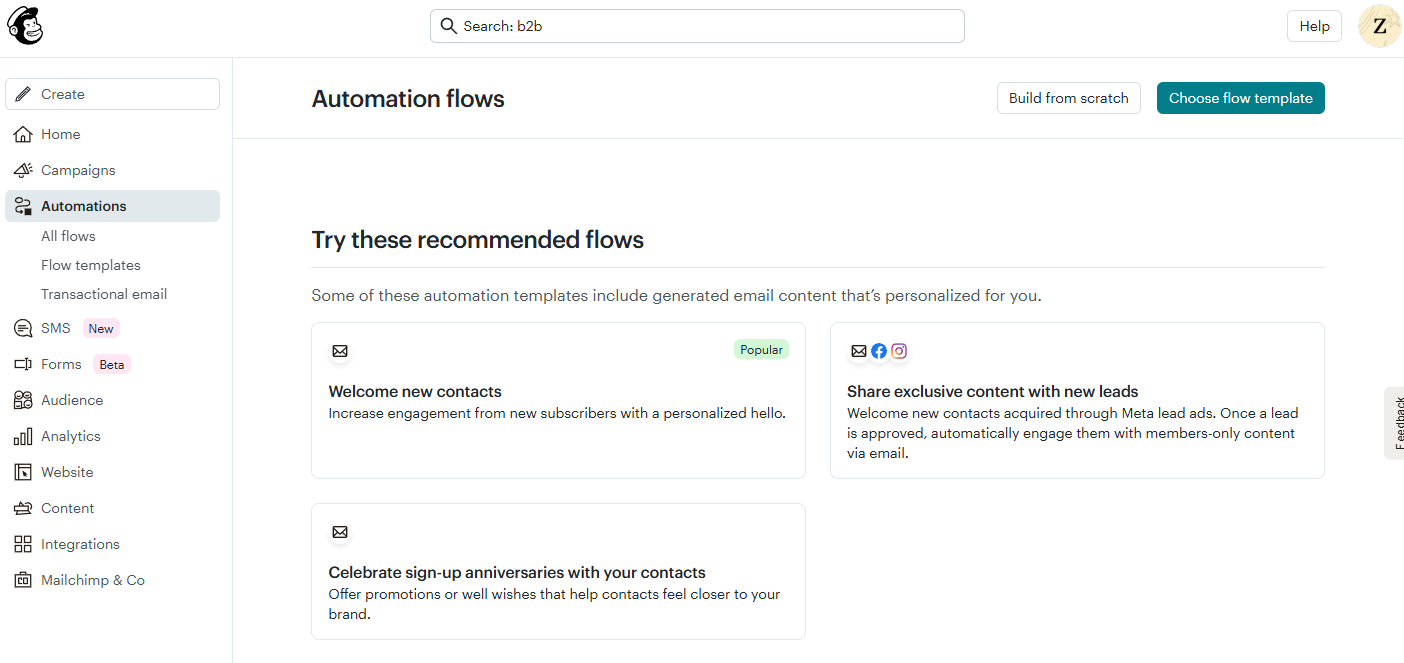
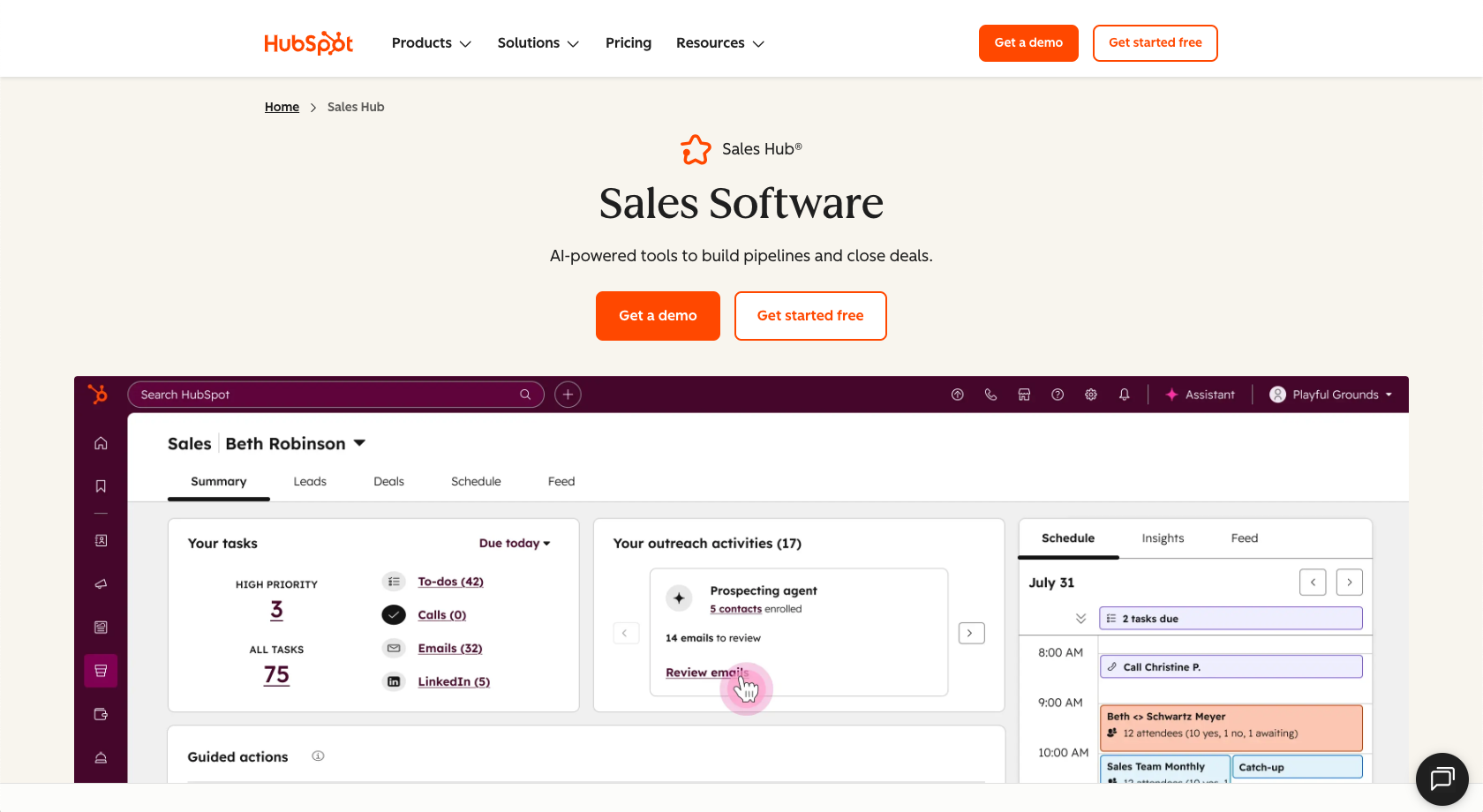
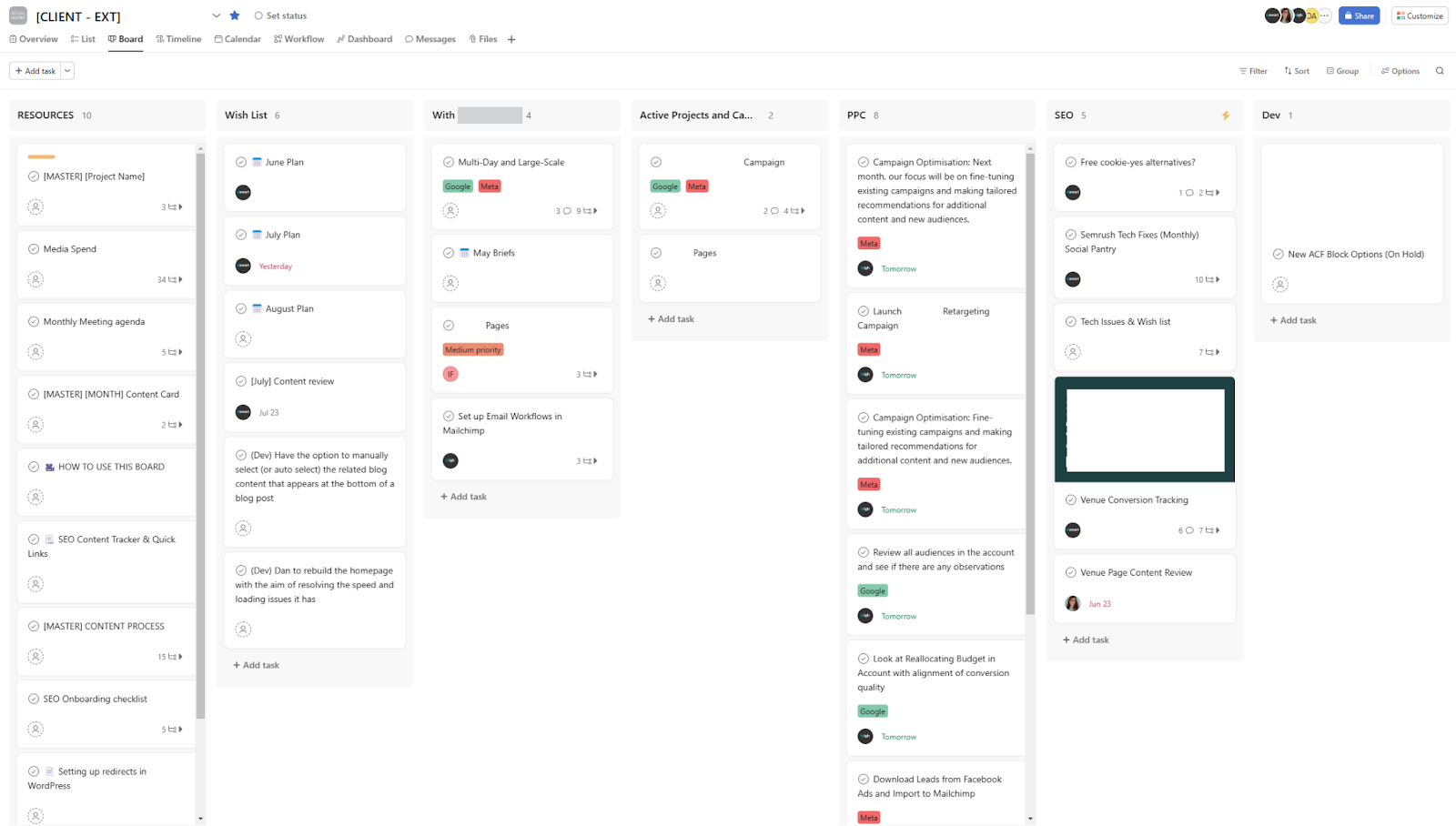
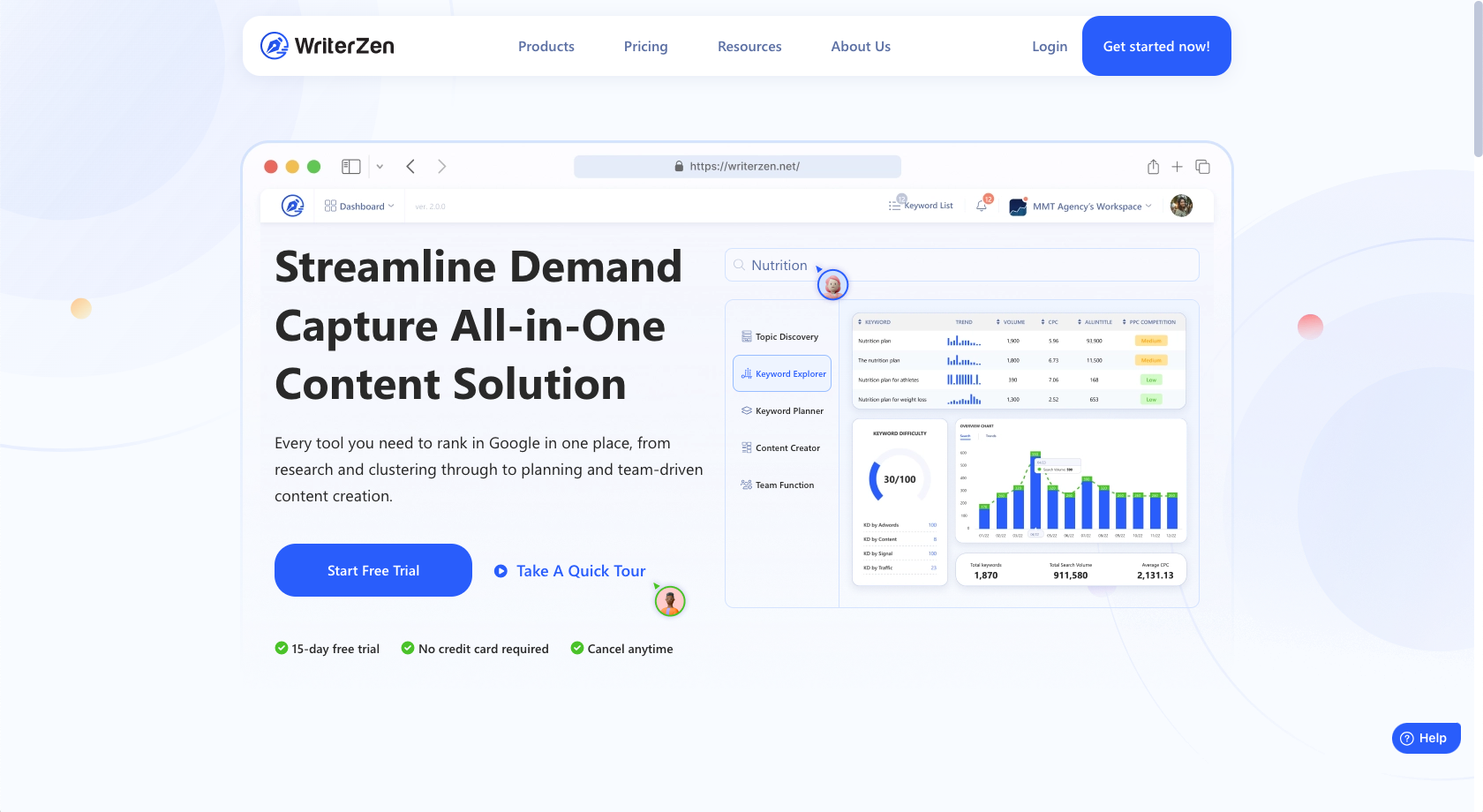
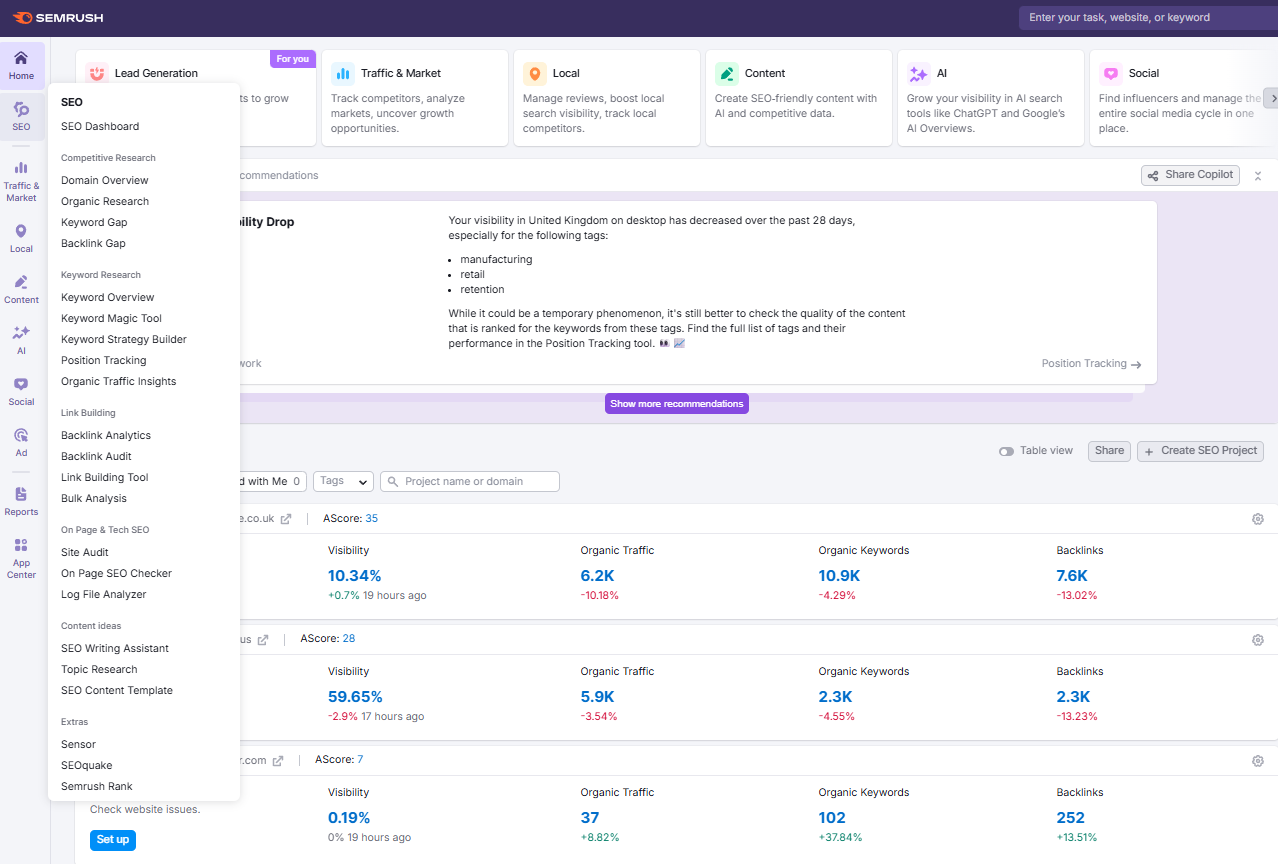
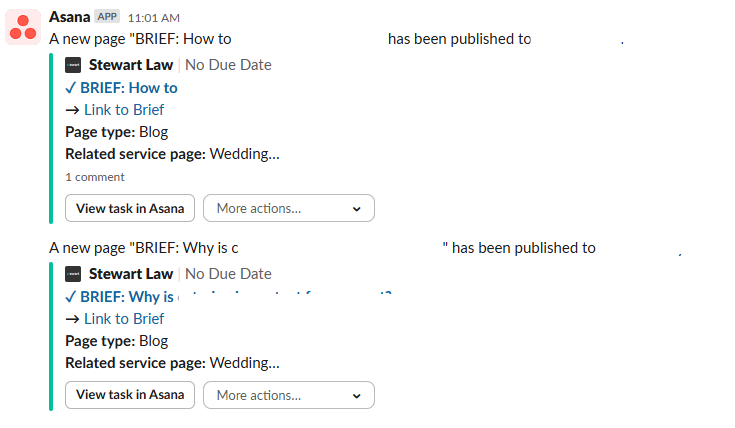
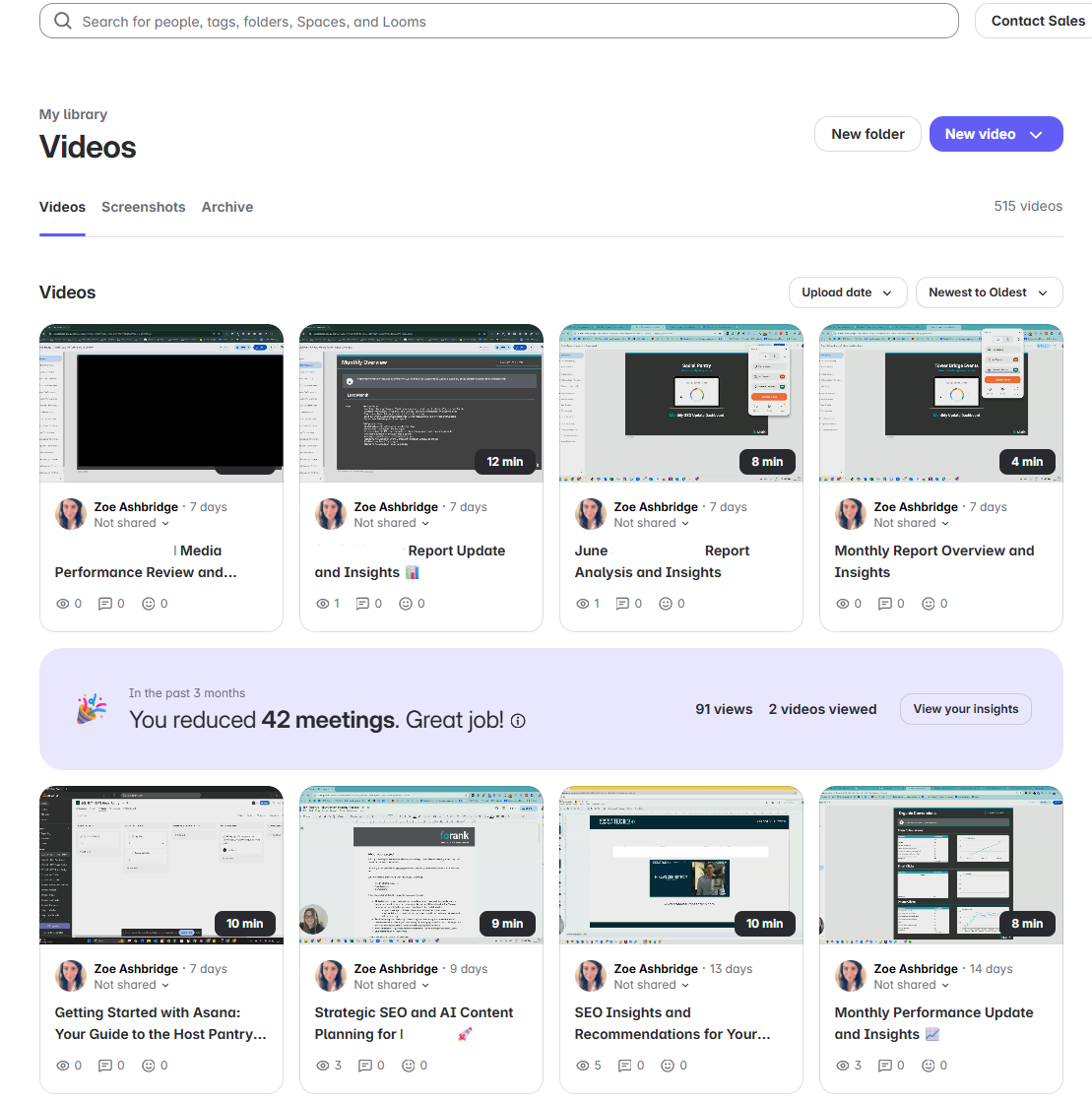
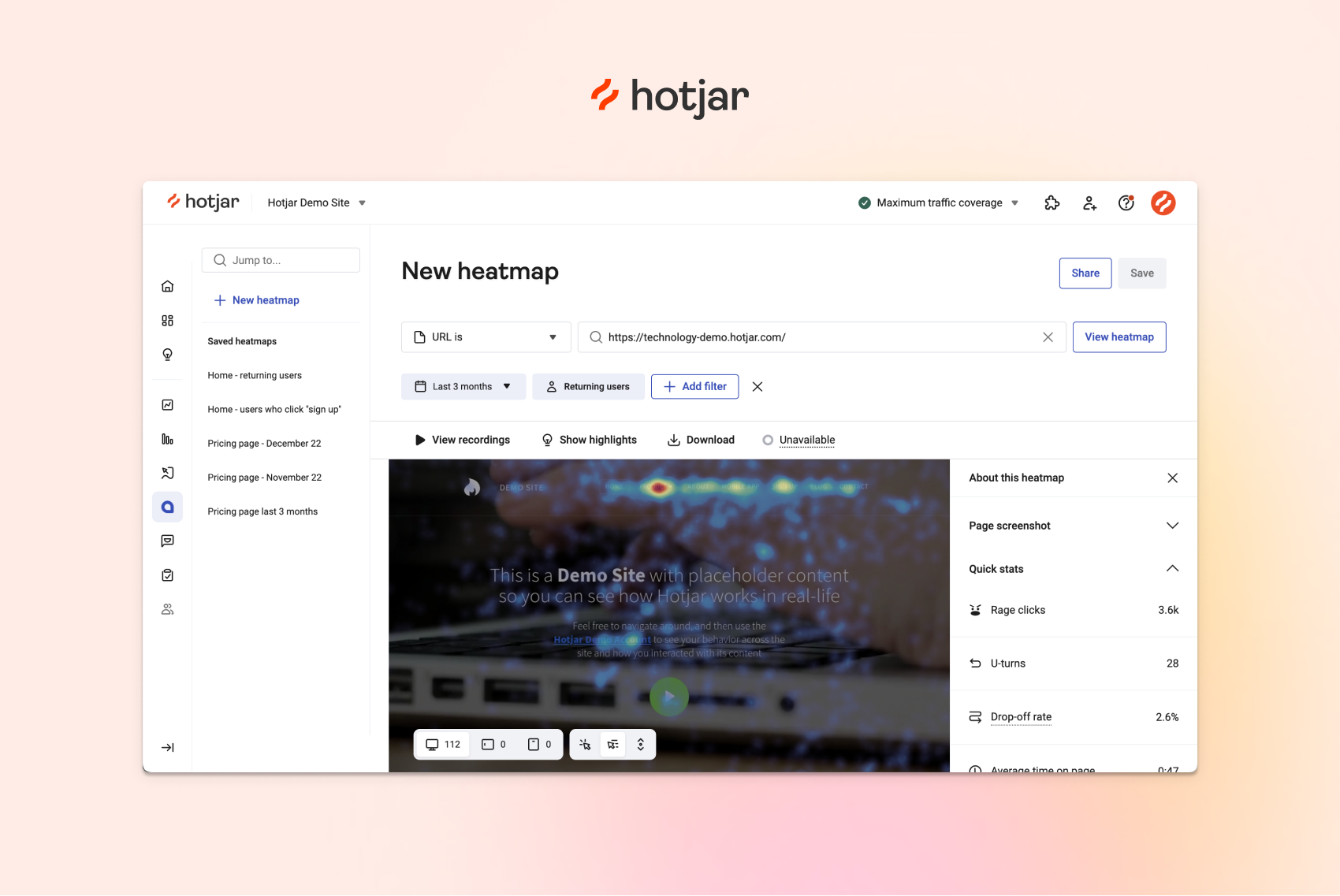
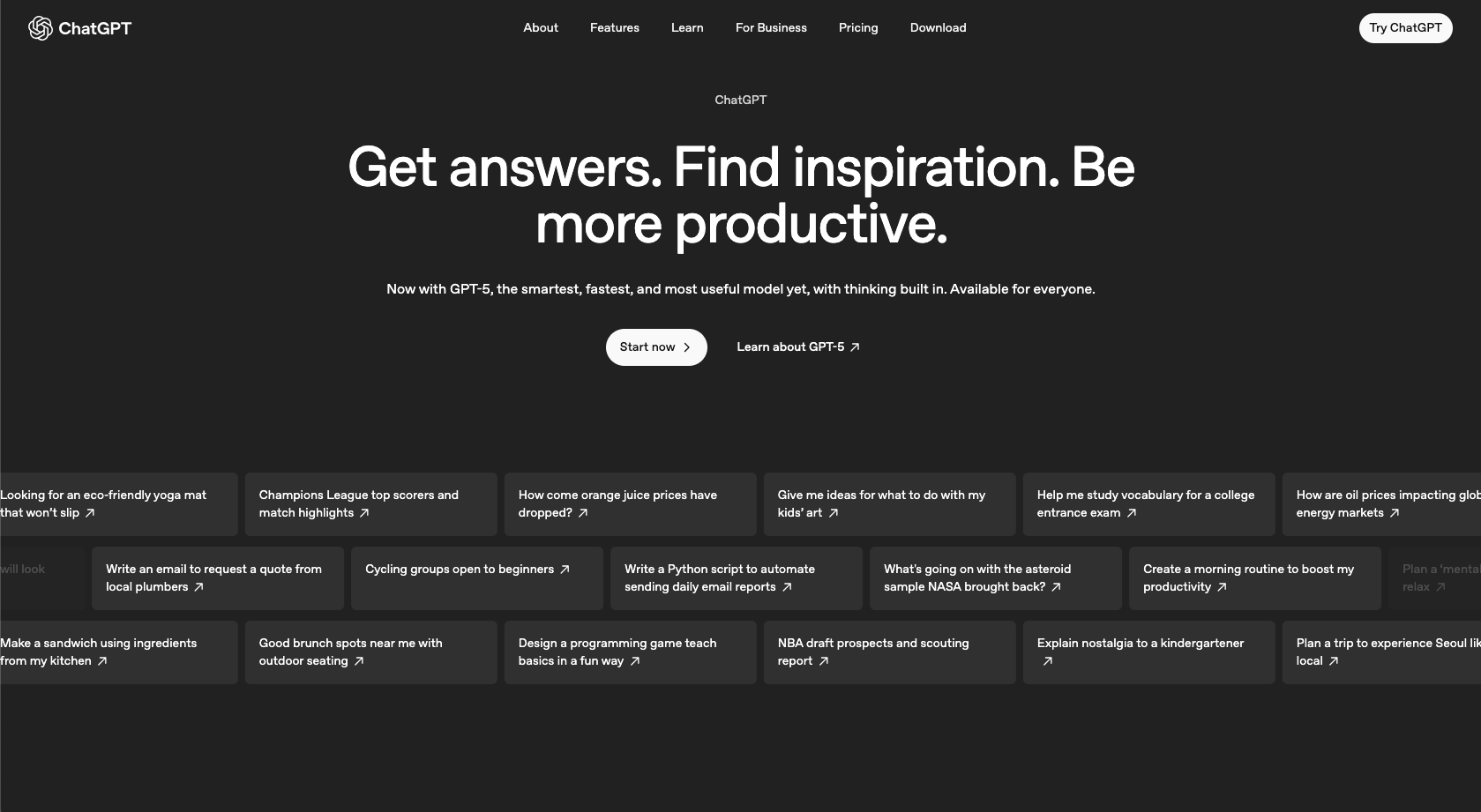






































































































Send Comment: